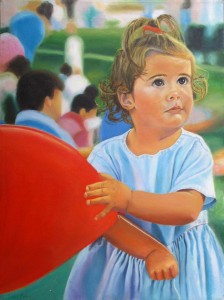Artist Oil Painting | Shading Techniques
Shading…
is a crucial step in creating the illusion of depth, to give a subject a ‘3-dimensional’ quality… on an artist’s canvas which is a 1-dimensional subject, where it does not actually exist .
Using the techniques of ‘highlighting’ and ‘shading’ to create depth that is not truly ‘there’, can bring a sense of realism and ‘life’ to subjects that would not otherwise look real on a flat canvas if neither of these techniques were used. Objects in real-life vs. a photograph…appear real to us, because they contain areas of dark & light, (i.e. shadows & highlights); where light hits them directly or indirectly. Highlights are the more prominent areas which receive more light, whereas shadows are recessed and they receive much less.
Expressing ‘Values’ Using Highlights & Shadows
Highlights & shadows can also be expressed in terms of ‘value’… highlights have lighter values, and shadows; darker ones. When shading an object, you also need to keep in mind that there are several’ values’ (or shades) of the color existing BETWEEN the highlighted and shaded areas. These in-between values are what the shadows and highlights consist of. The placement of these different ‘values’, as well as how you blend all of them together in a specific way; is what gives shadowing it’s realistic quality. Most people’s perception of what shadows are made up of, is actually incorrect… they often make the mistake in assuming that all shadows consist of some sort of black or gray.
Practical Use of Shading Techniques:
In order to create a quality oil painting which looks realistic and has more than just a 2-dimensional quality, an artist needs to employ shading techniques…while paying attention to the correct placement and blending of highlights & shadows together. If you look at the denim sundress in the photo of the little girl I painted, above…you can see that the shadows within the folds are made up of different colors, and they are definitely not black or gray! Although as an artist I enjoy using various color hues to make a painting more interesting, in this case what accounts for the different ones I used is actually a result of the reflected light…which is the color that is reflected off of another nearby one. In this particular case, the red that is reflected from her balloon onto the blue of her dress was combined to make magenta and purple tones).

